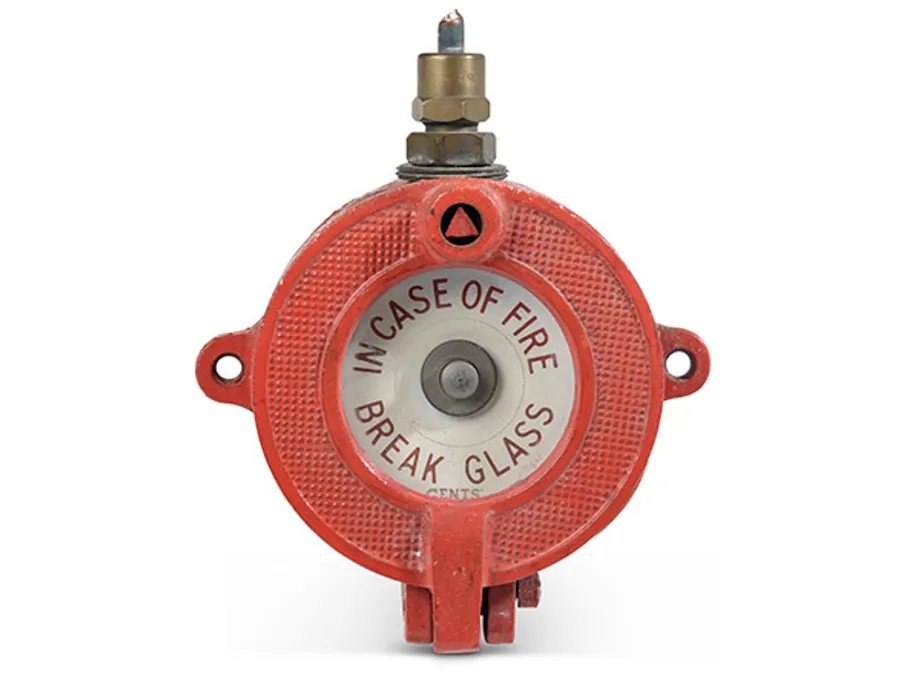Fire detection
Fire detectors are devices which sense one or more of the products or phenomena resulting from fire, such as smoke, heat, infrared and/or ultraviolet light radiation, or gas.
In homes, smoke detectors are often stand-alone devices. In non-domestic buildings, fire detection will typically take the form of a fire alarm system, incorporating one or more of the following automatic devices; heat detector; smoke detector, flame detector, and fire gas detector.
Fire alarm
This factory fire alarm does not detect a fire itself but relies on an individual to spot a fire or the signs of a fire and then trigger the alarm by breaking the glass and pressing a button.
There is no indication from the device itself whether pressing the button triggered an audible alarm or whether it had some other purpose.
The alarm was made by Gent & Company Limited (known as Gents') of Leicester which was founded by John Thomas Gent circa 1872 and still exists today as a company.

